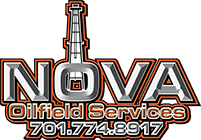Managing equipment leases effectively is crucial during busy seasons when demand spikes. Planning ahead and having the right strategies in place can make a big difference in keeping operations smooth and efficient. With careful preparation, businesses can avoid unnecessary delays and ensure they have exactly what they need when they need it.
Anticipating demand is an essential part of this process. Knowing in advance what equipment is required helps secure leases before the rush starts. Having a plan lets businesses focus on their work, reducing stress and boosting productivity. It’s all about staying one step ahead, ensuring that projects continue without a hitch.
During peak times, resource allocation becomes key. Making sure equipment is used efficiently across various projects keeps everything on track. By staying organized and prepared, businesses can handle the busiest times with confidence and ease.
Anticipating Demand and Planning Ahead
In the bustling world of oilfield operations, anticipating demand for equipment is key to smooth sailing. Knowing what machines you need and when you’ll need them can save a lot of hassle. There are several methods you can use to predict equipment needs during peak times.
Start by looking at past projects. Historical data gives insight into what equipment was required and when. This helps identify patterns and trends specific to your projects or geographical location. Next, consider proactive communication with project managers. They often have insights into upcoming projects and expected timelines, aiding in more accurate predictions.
Technology can also aid decision-making. Use software tools for project management that include features for equipment tracking and forecasting. These tools can alert you to potential shortages ahead of time.
The benefits of early planning are numerous. Securing leases in advance avoids last-minute scrambles during peak demand. You’ll have a better chance of getting the exact machines you need. Plus, planning ahead often means getting better leasing terms, which can save resources in the long run. Anticipating demand is all about preparation, ensuring you have the right tools at the right time.
Efficient Resource Allocation
Once you know your equipment needs, efficient resource allocation becomes the focus. It’s crucial to make sure every piece of machinery is used optimally across different projects. Here are some strategies to get the most out of your resources:
1. Prioritize Projects
– List tasks and rank them by urgency.
– Allocate the most needed equipment to the highest priority projects first.
2. Equipment Scheduling
– Create a clear and shared schedule for equipment use.
– Ensure all team members know when and where each piece of machinery is assigned.
3. Multi-Project Use
– Consider whether machinery can be moved between sites to maximize usage.
– Coordinate with project managers to facilitate smooth transitions between sites.
4. Regular Assessment
– Review equipment usage regularly to identify inefficiencies.
– Adjust allocations as projects progress and needs change.
These strategies not only ensure that your projects run smoothly but also prevent equipment from standing idle. Careful management of resources allows for greater flexibility and improves project timelines. By following these tips, equipment is always where it’s needed most, supporting higher operational efficiency and better project outcomes.
Staying Flexible with Lease Terms
Leasing equipment in the oilfield sector requires flexibility to adapt to changing project demands. Flexible lease agreements offer benefits that help meet dynamic needs effectively. Understanding the importance of adaptable terms can make managing resources easier.
One advantage of flexible leasing is the ability to respond to unexpected changes. Short-term projects may need more equipment quickly, while longer projects might require fewer resources over time. Having a lease that accommodates these shifts allows for adjustments without unnecessary complications. It ensures that projects continue smoothly without equipment shortages or excess.
Exploring lease options can lead to better planning strategies. Short-term leases provide the flexibility to meet immediate, temporary needs, permitting easy scaling up or down depending on the situation. Conversely, long-term leases ensure the availability of essential equipment for projects with established timelines, often at more favorable rates.
Choosing between short-term and long-term leases involves considering the specific demands of each project. Weighing these options and maintaining flexible agreements can enhance operational efficiency, reduce costs, and improve overall project management.
Communication and Coordination with Vendors
Clear communication with vendors is vital for ensuring equipment is delivered on time and according to specifications. Building strong relationships with suppliers encourages smoother transactions and reliable support.
Start by establishing transparent communication channels. Share your project timelines and equipment needs clearly with your suppliers. Frequent updates help vendors anticipate your requirements, ensuring they have adequate stock and can meet your deadlines.
Here are a few tips for building effective vendor relationships:
1. Regular Check-Ins
– Schedule periodic meetings to discuss ongoing needs and potential challenges.
– Provide feedback to assist vendors in understanding your expectations.
2. Set Clear Expectations
– Clearly outline delivery times, specifications, and quality standards.
– Use contracts to formalize terms and prevent misunderstandings.
3. Build Trust
– Maintain honesty and integrity in transactions.
– Foster a cooperative rather than confrontational relationship.
By following these strategies, vendor relationships become partnerships built on trust and reliability. Effective communication ensures timely delivery and high-quality service, which is crucial for minimizing delays and maximizing project efficiency.
Conclusion
Keeping oilfield operations running smoothly demands strategic planning and smart equipment management. Anticipating demand, allocating resources wisely, staying flexible with leases, and fostering strong vendor relationships build a foundation for successful outcomes. These practices not only optimize equipment use but also ensure projects are completed on time while controlling costs.
Discover how Nova Oilfield Services can support your projects with reliable equipment rentals and sanitation services. Our experienced team is ready to help your operation succeed by offering tailored solutions that match your needs. Connect with Nova Oilfield Services to learn more about our comprehensive offerings and how we can help streamline your oilfield activities.








